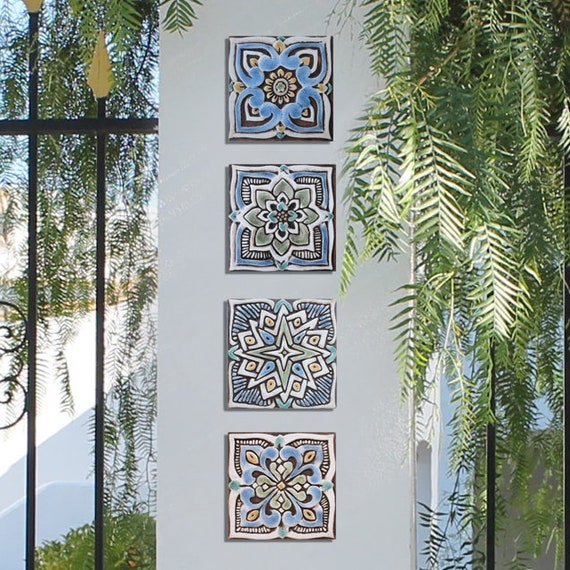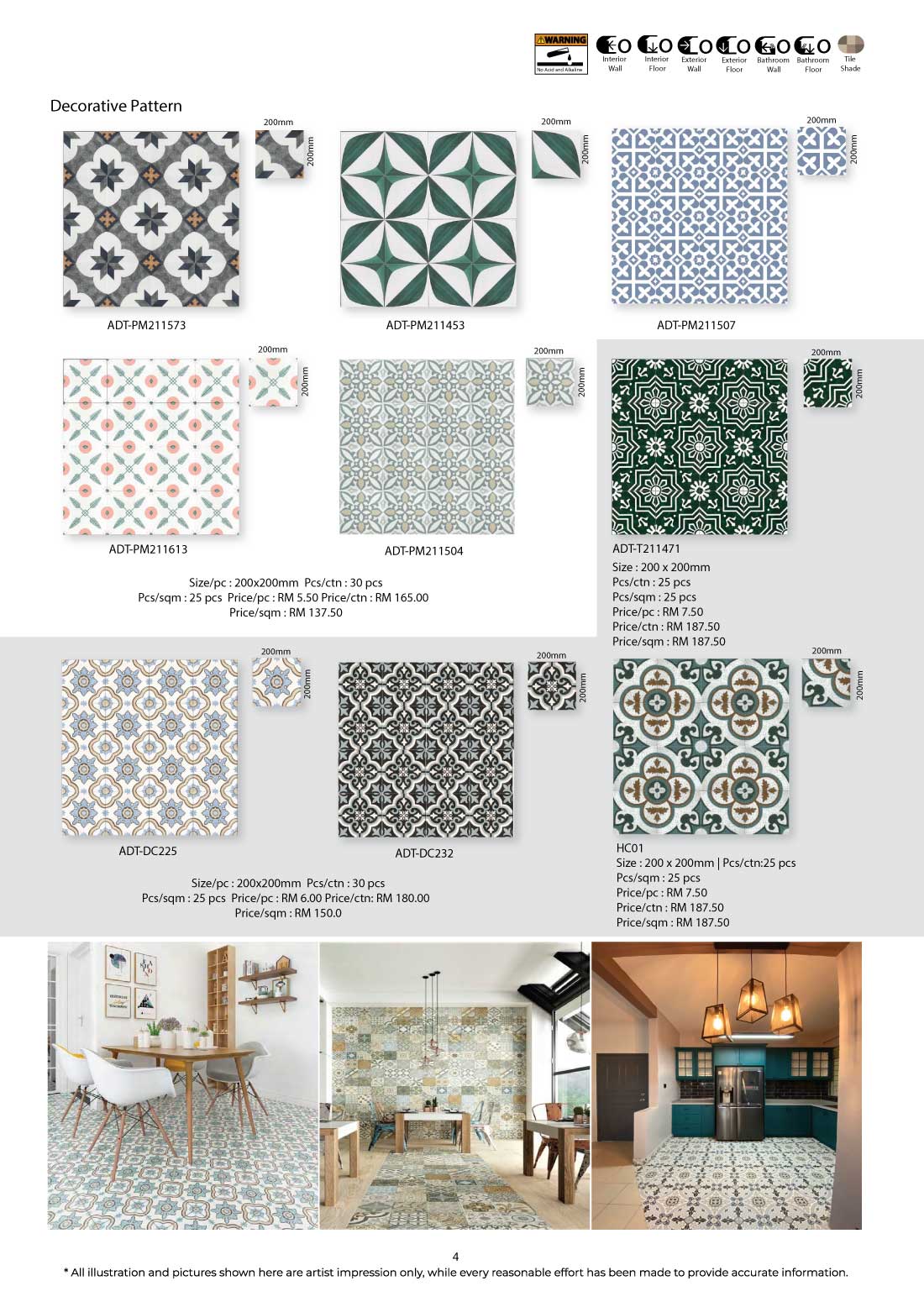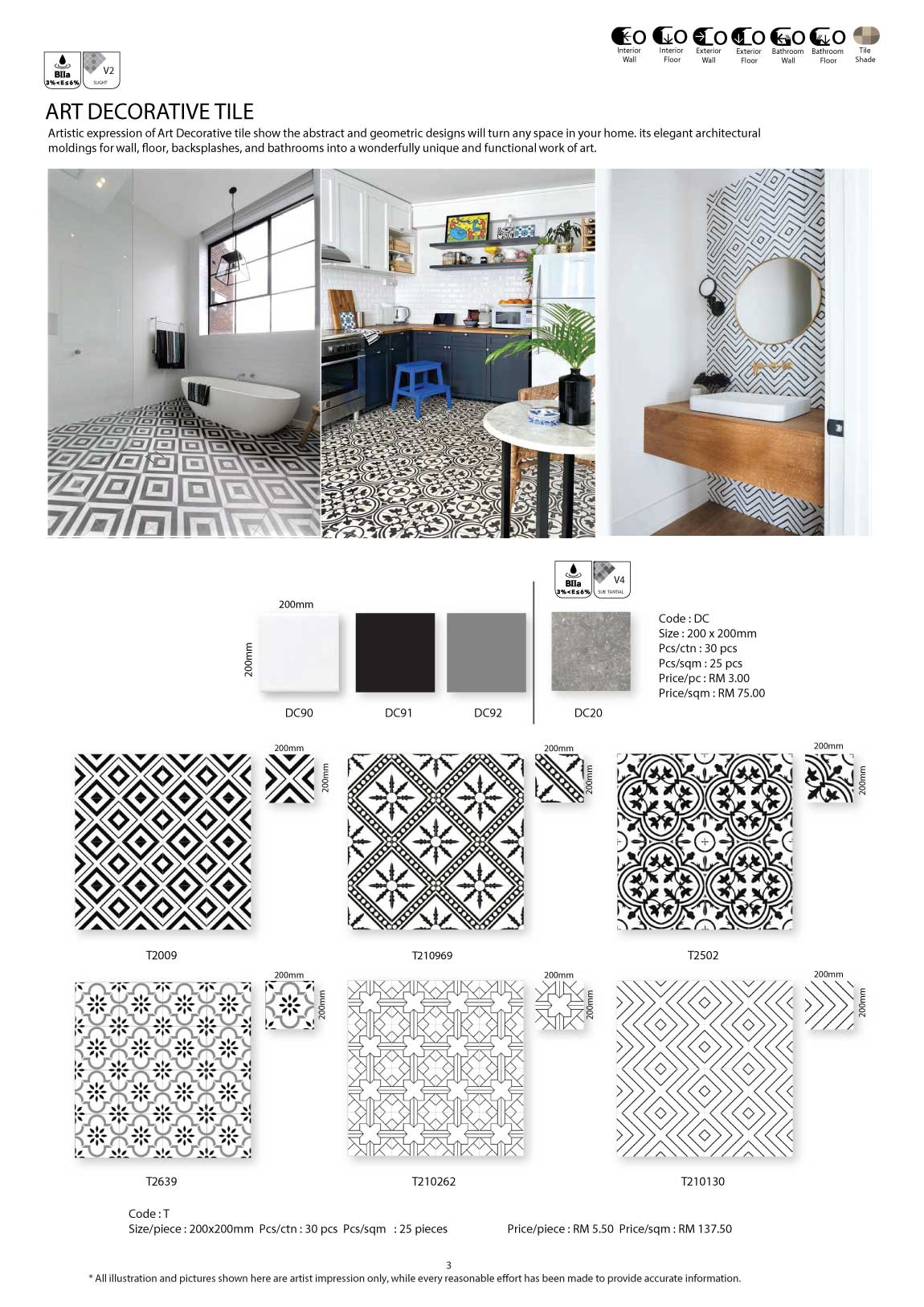Introduction to Decorative Art Tiles
Decorative art tiles are more than just functional materials; they are a medium of expression. As someone who has spent countless weekends exploring various styles, I can assure you that incorporating these tiles into your home can turn any dull space into a charming focal point. From intricate patterns to vibrant colors, decorative tiles can reflect your personality and taste.
Understanding Decorative Art Tiles
Decorative art tiles come in various styles and materials, suitable for almost any decor theme. They can be used in kitchens, bathrooms, and as standalone art pieces. Before diving into decorating, it’s essential to understand the different types available.
Types of Decorative Art Tiles
There are several types of decorative tiles, including:
- Ceramic Tiles: Versatile and available in countless designs.
- Porcelain Tiles: Durable and water-resistant, ideal for bathrooms.
- Glass Tiles: Reflective and colorful, perfect for accent walls.
- Natural Stone Tiles: Unique and elegant with rich textures.
- Encaustic Tiles: Handmade with intricate patterns that add charm.
Why Choose Decorative Art Tiles?
Choosing decorative art tiles for your home can be an exciting decision. Here are some reasons why I believe they are a fantastic choice:
1. Aesthetic Appeal
The beauty of decorative tiles lies in their ability to enhance any space dramatically. The patterns and colors can tell a story, allowing you to express your style.
2. Durability
Many decorative tiles are designed to withstand the test of time. Tiles made of porcelain or ceramic are particularly resistant to chips and scratches.
3. Easy Maintenance
Tiles are often easy to clean; a quick wipe can restore their shine. This is particularly beneficial in high-traffic areas or spaces subject to spills.
Popular Styles of Decorative Art Tiles
The world of decorative art tiles is vast and varied. Here, I will outline some of the most popular styles that you might consider for your project.
Traditional Styles
Traditional tiles often feature classic patterns and designs, such as floral motifs or geometric shapes that have been used for centuries.

Contemporary Styles
Contemporary tiles emphasize minimalism and sleek lines, often focusing on solid colors or abstract designs.
Rustic Styles
Rustic tiles bring warmth to a home with earthy tones and textures. They often mimic natural materials like wood or stone.

Art Deco Styles
Art deco tiles are characterized by vibrant colors, bold geometric patterns, and an overall sophisticated look.
Choosing the Right Material
Selecting the right material for your decorative art tiles is essential for achieving the desired look and functionality. Here’s a comparison of some common tile materials:

| Material | Pros | Cons |
|---|---|---|
| Ceramic | Affordable, wide range of styles | Can be prone to cracking |
| Porcelain | Durable, water-resistant | Generally more expensive |
| Glass | Reflective, colorful | Can be slippery; limited patterns |
| Natural Stone | Unique, rich textures | Requires sealing; expensive |
| Encaustic | Unique designs, handmade | May need more maintenance |
Installation Tips for Decorative Art Tiles
Installing decorative art tiles can be a rewarding DIY project. However, it’s crucial to approach it correctly to ensure a beautiful finish.

Preparation
Start by ensuring your surface is clean, dry, and level. Remove any old flooring or wall coverings that might impair adhesion.
Cutting Tiles
Use a tile cutter or wet saw for clean edges. Measure twice to ensure accuracy and prevent waste.

Applying Adhesive
Use a notched trowel to spread adhesive evenly, ensuring good contact with each tile.
Grouting
Once the tiles are set, wait for the adhesive to cure before applying grout. Follow your grout manufacturer’s instructions for the best results.

Maintenance of Decorative Art Tiles
Taking care of your decorative art tiles will extend their lifespan and keep them looking beautiful. Here are some maintenance tips:
Cleaning
Regular cleaning with a mild detergent and water is usually sufficient. For tougher stains, consider using a pH-balanced tile cleaner.

Sealing
Natural stone and porous tiles may require sealing to prevent stains. Always check your manufacturer’s guidelines for specific instructions.
Repairing
If a tile cracks or chips, replacing it promptly can prevent further damage. Always keep a few extra tiles from your initial project for repairs.
Where to Buy Decorative Art Tiles
Finding the right decorative art tiles can be an adventure. Here are some popular options:
Local Home Improvement Stores
Stores like Home Depot and Lowe’s often carry a wide selection of tiles.
Specialty Tile Shops
If you’re looking for unique or high-end options, local tile shops may have what you need.
Online Retailers
Websites like Wayfair, Overstock, and even Amazon offer extensive collections with the convenience of home delivery.
FAQs about Decorative Art Tiles
What are decorative art tiles made of?
Decorative art tiles can be made from various materials including ceramic, porcelain, glass, natural stone, and even metal.
Can I install decorative tiles myself?
Yes, many homeowners choose to install decorative tiles themselves. With proper preparation and tools, you can achieve professional-looking results.
How do I choose the right grout color?
The grout color can significantly affect the overall look. Light grout can offer a more expansive feel, while dark grout can provide a striking contrast.
Are decorative tiles suitable for outdoor use?
Not all decorative tiles are suitable for outdoor use. Ensure you choose outdoor-rated tiles that can withstand temperature fluctuations and moisture.
What styles are trending in decorative art tiles?
Currently, geometric patterns, earthy tones, and handmade tiles are gaining popularity in home decor.